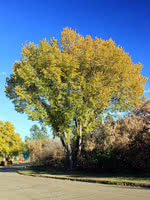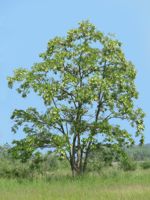Mon-Fri 9am - 5pm Mountain time
American Elm vs Black Locust
Ulmus americana
Robinia pseudoacacia
American Elm is fast growing, tall tree with a recognizable and pleasing shape.
It's well suited for urban environments because of its non-invasive roots and ability to grow on harsh sites (quite salt tolerant). American Elm develops a wide, dense canopy that provides shade for many city streets around North America.
Black Locust is an attractive tree. Its distinctive leaves are made of about a dozen bright green leaflets. It also notable for its fragrant white flowers, which smell of citrus.
Black Locust can grow in many situations, but prefers dry areas with lots of sun. It is robust and is an excellent choice for establishing shade in dry, open areas.
Important note: Much of the Black Locust is toxic to humans and livestock, including seeds, bark, and leaves.

